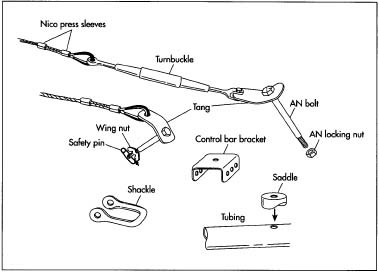- Skid
WingSled™ (from Omega Hang Gliders) . Put a surface that will not
catch; carbon fiber plate.
- Frontal canard that actually has a trailing edge just aft of the basebar,
so skiing the bottom surface of the canard wing over rocks and plants will
protect the pilot. The canard wing will be made of composite carbon fiber CCF
and be held by a sturdy carbon beam from the leading edge of the main wing.
- Downwind downslope .... pilot with skis on his feet. How could one
off the skis at the last moment if one wanted street shoes for the landing.
If one is committed to stay in the pod, then how might skis come into sturdy
place when standing vertically. The canard
might be best.
- If there is 15 mph plus tailwind at landing in an 18 mph wing, then the
ground will be moving at 33 mph when the canard will be hitting rocks and
plant as a broad ski; this will slow the system, but still there will be the
15 mph tailwind that could catch the trailing edge and flip the wing
- Extended keel to skid
- If canard WingSled™
(from Omega Hang Gliders) is being used, then a
see-through aft-section of the sled could give visual ; the aft part should go
as far as under the TCF basebar, so that the plants and rocks will not pop up
and catch the basebar.
- If I am coming in with tailwind and the rocks and plants are streaming by
at 30 mph, then skiing of the legs without catch will be important. Firm knee
protection! Clear all snags. Lower section of the harness should sled also.
- Will the canard have two settings? For for flight and one for landing?
- No beaking
Fold down a portion of TCF forward to become skid
- When the sledding is occurring over the rocks and plants, the bracing will
be on the control bar and pulling the front flying wires; so beefy frontal
flying cables will be important.
- In a tailwind landing, a final keeping nose up could keep the wind from
flip trail-edge over top.
- Last minute restraining pilot to the aft cable; have lines left and right
to harness that go to aft flying lines; a mid cable hookin will be available;
this will keep pilot from flying too far forward if a sudden whack or stop is
experienced.
- Downwind downslope landing of hang glider ....what to do? If the
slope is steep, then fly downwind with extra airspeed and then use that energy
to fly out and make a turn to do a quick upslope landing into the wind.
- GS will be wind speed plus flying airspeed
in a tailwind landing.
Do keep flying; keep up airspeed no matter that the ground is going by fast.
Things will be OK if the texture of the ground is OK and some preparations are
made for this kind of landing. What could those preparations be?
- The trip from TCF feet is the
challenge. Even if there were wheels at the feet, they are in a place
that does not solve, if the wheels are low tread and the texture of the
landing is with sand, rock, or plants that would catch the basebar and
bring rotation of nose to a beaking. Small wheels do not keep the
basebar up away from stones and plants. Plants and rocks can hit the basebar
and trip the glider into beaking. Ball, turn, and ?
- Idea fuzzy: quick shortening of the hang lines.
- Idea fuzzy. Hang line that stretches without rebound, but takes up energy
when stretched.
- What is wanted in one tactic for
downwind downslope or
even just downwind level is to ski over the irregularities of the ground while
flying. Tailwind downslope.
- Prove the solutions with FLG flatland long gliding ...
- Practice with solutions, so that the fast groundspeed thing is familiar.
- Desert plants are a challenge. The Joshua tree is high and most
troublesome. Could I map out clear-enough areas in
non-road areas? Wheels for hiking out will be wanted. Could wheels
be stowed in the harness backplate? Or could wheels be wrapped from battens?
Or drag on ski?
-
- Frontal low skid. Look at primary gliders and
powered aircraft. HGs should not be different.
-
- WWW Wheels When Wanted
- BRWW Big roller when wanted. But if the canard sled is
used, then rollers and wheels will not be needed.
- Frontal low skid that could ski over plants.
- Split TCF so that the frontal split rotates forward
- Catch net pulled up from TCF basebar hold to fill the triangle of the
frontal wires.
- Harness body to rear of keel to prevent full swing through.
- Quick harness shoulders to the two feet of the TCF to prevent full
swing-through. The holds could be energy-takers that let some swing-through
with non-rebound stretch; that is, no springback, just stretch with a taking
up of energy. This might be pneumatic compression with release of air from
leak as a piston in the special cord compresses air but releases at a certain
rate. Or a one-way bungee that ratchets to prevent rebound.
- Tet with lower face ....too sharp....such could dig
in......rather, the broad canard wing would be much better. Broad canard would
press down plants and skip over rocks. A sharp delta canard could cut into
plants and get caught or dig into ground and plow or enter between rocks and
wedge. Differently, I want to ski over plants and ski over rocks.

- July 9, 2010, sent a note in Facebook to Dave Kilbourne about my working
on small low canard to do several functions: Lift, front downwind
downslope skid, anti-whack, and other secondary uses.
- Posted note in July Lift 2010.
  
|